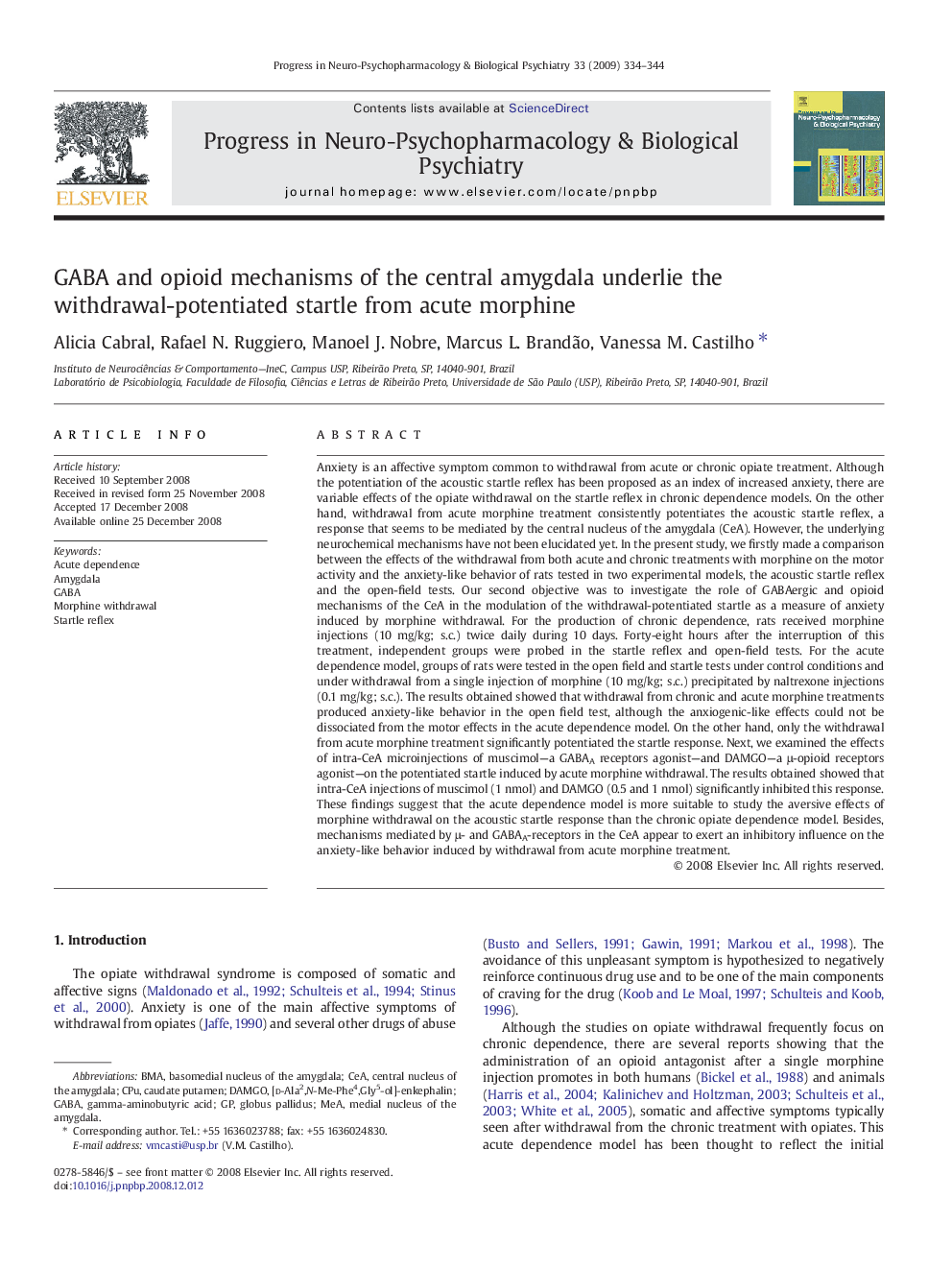| کد مقاله | کد نشریه | سال انتشار | مقاله انگلیسی | نسخه تمام متن |
|---|---|---|---|---|
| 2566416 | 1128082 | 2009 | 11 صفحه PDF | دانلود رایگان |

Anxiety is an affective symptom common to withdrawal from acute or chronic opiate treatment. Although the potentiation of the acoustic startle reflex has been proposed as an index of increased anxiety, there are variable effects of the opiate withdrawal on the startle reflex in chronic dependence models. On the other hand, withdrawal from acute morphine treatment consistently potentiates the acoustic startle reflex, a response that seems to be mediated by the central nucleus of the amygdala (CeA). However, the underlying neurochemical mechanisms have not been elucidated yet. In the present study, we firstly made a comparison between the effects of the withdrawal from both acute and chronic treatments with morphine on the motor activity and the anxiety-like behavior of rats tested in two experimental models, the acoustic startle reflex and the open-field tests. Our second objective was to investigate the role of GABAergic and opioid mechanisms of the CeA in the modulation of the withdrawal-potentiated startle as a measure of anxiety induced by morphine withdrawal. For the production of chronic dependence, rats received morphine injections (10 mg/kg; s.c.) twice daily during 10 days. Forty-eight hours after the interruption of this treatment, independent groups were probed in the startle reflex and open-field tests. For the acute dependence model, groups of rats were tested in the open field and startle tests under control conditions and under withdrawal from a single injection of morphine (10 mg/kg; s.c.) precipitated by naltrexone injections (0.1 mg/kg; s.c.). The results obtained showed that withdrawal from chronic and acute morphine treatments produced anxiety-like behavior in the open field test, although the anxiogenic-like effects could not be dissociated from the motor effects in the acute dependence model. On the other hand, only the withdrawal from acute morphine treatment significantly potentiated the startle response. Next, we examined the effects of intra-CeA microinjections of muscimol—a GABAA receptors agonist—and DAMGO—a μ-opioid receptors agonist—on the potentiated startle induced by acute morphine withdrawal. The results obtained showed that intra-CeA injections of muscimol (1 nmol) and DAMGO (0.5 and 1 nmol) significantly inhibited this response. These findings suggest that the acute dependence model is more suitable to study the aversive effects of morphine withdrawal on the acoustic startle response than the chronic opiate dependence model. Besides, mechanisms mediated by μ- and GABAA-receptors in the CeA appear to exert an inhibitory influence on the anxiety-like behavior induced by withdrawal from acute morphine treatment.
Journal: Progress in Neuro-Psychopharmacology and Biological Psychiatry - Volume 33, Issue 2, 17 March 2009, Pages 334–344